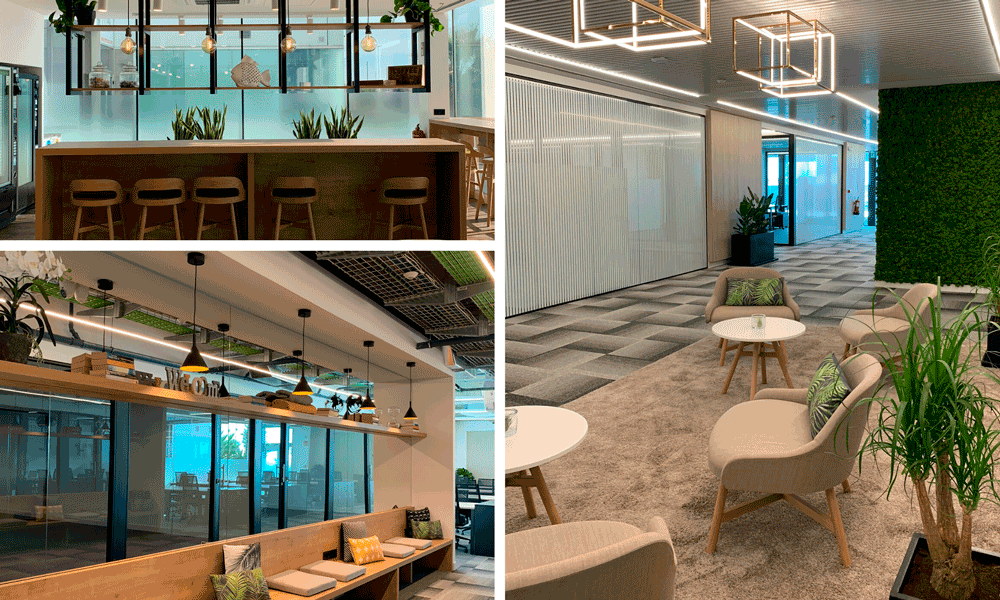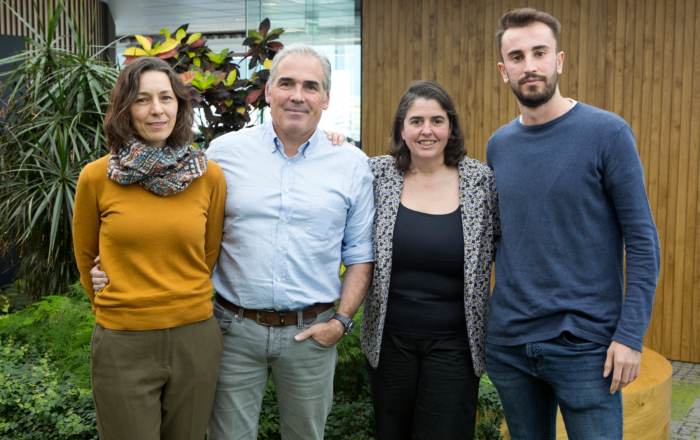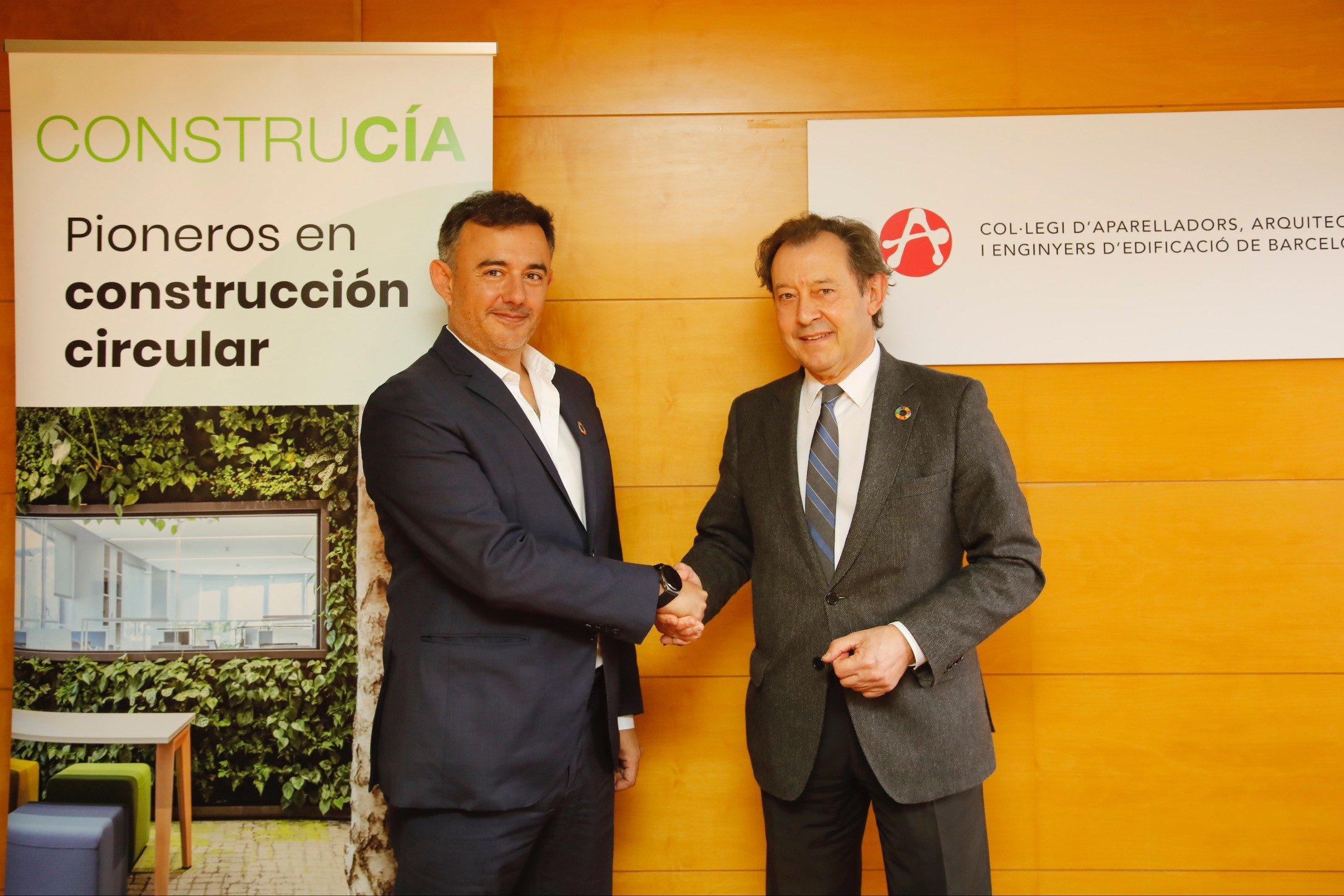If there is one thing that defines our Lean2Cradle® methodology, it is the importance we place on people's health. In each of the projects we undertake, the creation of healthy spaces is a must. We design and build with the users who will occupy these spaces in mind, in order to generate a positive impact.
The World Green Building Council and the WELL Building Institute ™ found evidence that office design has a significant effect on the health, wellbeing and performance of the users who occupy them. A healthy office contributes to improved productivity and staff retention, thus reducing costs per employee and turnover.
The design and layout of spaces, the materials used in the construction of the building or the thermal, acoustic, light and electromagnetic conditions are some of the elements that have an impact on the health level of the workplace.
When we talk about healthy offices, we are not only referring to those aspects that affect our physical well-being, but also to the importance of emotional and social well-being. The aim is to create pleasant spaces that favour the interrelationship of workers and teamwork, thus reducing stress and improving comfort in every respect

Methodologies and tools to create healthy work spaces
At Construcía we use methodologies and tools that allow us to manage the circular value of spaces over time.
Applying Cradle to Cradle principles creates value for society and the environment, reflecting positive impacts and reducing negative ones. Office users obtain higher levels of productivity and comfort and a healthier working environment; society benefits from a lower carbon footprint and the elimination of waste through cyclability; and the environment benefits from lower toxicity impacts (eco-toxicity and human toxicity).
The tool that Construcía has co-developed with KPMG, L2C True Value, allows us to know and quantify this social value generated through the use of our L2C methodology.
At Construcía, we have been aware for more than a decade of the effect that offices have on the well-being and productivity of workers. We spend an important part of our day at the workplace, so it is necessary to be aware of the influence that this can have on our well-being. With a healthy work space there are many benefits to both the health and performance of employees. In fact, unhealthy buildings can even lead to a medical condition known as sick building syndrome.

7 key factors for a healthy workplace
Healthy materials
This is one of the fundamental aspects of a healthy office. Building materials often contain toxic substances that can be harmful to health. With the Lean2Cradle® methodology we apply the principles of Cradle to Cradle, where it is required that the materials and products used are free from toxicity. This requires measuring the chemical composition of all components at a molecular level of 100 ppm. Furthermore, by using these materials, we are optimising their life span, as they are cyclable materials, which ensures that they can be safely reused. The use of C2C materials Certified™ considerably reduces the impacts of the value chain compared to normal materials.
Flexibility
It is important to have flexible working spaces and solutions that may be adapted to each of the needs that may arise. Including open work areas facilitates communication and the sharing of knowledge . But it is also important to have rooms of different sizes and characteristics for those jobs that require greater privacy or concentration. An ideal combination would include, for example, open space areas, private offices, meeting rooms and training rooms. It is also advisable to add resting areas to break away from the routine and fostering teambuilding.
Light
Promoting natural light throughout the space and access to workplaces helps to create a healthy office. Despite this, it is always necessary to have some artificial light, but it is advisable that this can be regulated according to circadian rhythms (how solar cycle affects people).
Sound
The design and layout of the office can help reduce the noise generated in the office. Having a proper acoustic insulation system in ceilings, walls and floors, promotes the welfare of workers and their concentration, thus increasing productivity. Some elements such as double glazed screens or noise absorbing carpets significantly improve the acoustic quality of offices.
Air/Ventilation
In order to create a healthy workplace we must pay special attention to the design of air renovations and use materials that reduce the impact of toxic volatile particles, such as the Cradle to Cradle materials that we integrate into the Lean2Cradle® methodology.
Biophilia
The connection with nature is used in the work spaces to promote well-being, health, creativity and emotional comfort. Nature has a great power to positively influence the users of spaces. Some examples of the incorporation of biophilia are work areas next to windows with views of nature, plants, flowers or vertical gardens, the use of natural materials, furniture with organic forms and such.
Active Design
The distribution of space is essential to improve productivity. A design that favours physical activity of users avoids sedentary lifestyles and improves communication among teams.

Healthy workplaces with Lean2Cradle® methodology
Lean2Cradle® methodology has been created for the construction of circular spaces. The benefits of circularity range from improving people's health, to increasing productivity, to protecting natural resources, residual value and reducing operating costs and regulatory and reputational risks.
Lean2Cradle® is the combination of applying the principles of Cradle to Cradle and Lean Construction, under the framework of circular economy. This methodology allows us to design spaces and measure their impact on people.
McKinsey calculated that the application of LEAN Construction may offer reductions of 10 to 30% in expected completion time and cost savings of 10 to 25%, improving the current net value (CNV) of the project by 5 to 10%.
Some examples of healthy offices in which we have carried out the Lean2Cradle® methodology are those of Haya Real Estate, Torre D'Ara co-working space or Grupo Construcía's own offices, both in Madrid and Barcelona. In all these projects we have achieved a space health index of over 65 points (out of 100) while in conventional constructions it does not exceed 10 points.
The world needs spaces that improve people's health and the environment. The construction sector has the role of moving forward towards a healthier model that generates a positive impact, both on an individual level and on an economic and social level. This model is that of circular construction.






























































